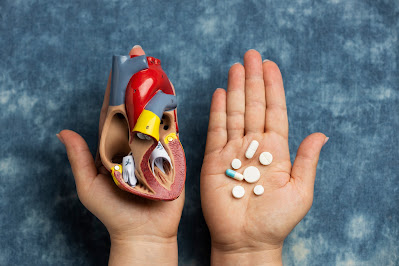Gout is a distressing form of arthritis. Sharp crystals can grow in your joints (typically your big toe) if your body has excessive uric acid. Gout attacks are periods in which pain and edema flare up and disappear. Treatment is usually a combination of symptom management and dietary changes. So before purchasing gout medications using the best prescription discount card, here’s a beneficial guide on everything you need to know about gout & its treatment.
What exactly is gout?
Gout, a form of inflammatory arthritis, causes joint swelling and pain due to an elevated uric acid level in your body.
The big toe joint is the most usually affected by gout. However, it can have an impact on other joints, such as your:
Knees
Ankles
Wrists and hands
Elbows
What is the cause of gout?
Gout is primarily caused by the buildup of uric acid crystals in the joints. Excessive uric acid in the bloodstream causes these crystals to form. It is caused primarily by purines, a compound found in certain foods and beverages. The breakdown of purines produces uric acid as a byproduct. Consuming excessive purine-rich foods, such as organ meats, seafood, and alcohol, can lead to elevated uric acid levels and trigger gout attacks as a result. Further, genetics, obesity, certain medications, and underlying health conditions can increase the risk of developing gout. By understanding the causes of gout, individuals can make informed lifestyle choices to manage the condition and reduce the frequency of painful flare-ups.
Symptoms of Gout
Gout symptoms nearly always appear unexpectedly and at night. These are some examples:
Intense joint ache
Gout commonly affects the big toe. However, it can affect any joint. Ankles, knees, elbows, wrists, and fingers are commonly afflicted joints. The pain will likely be severe in the first four to twelve hours.
Persistence of discomfort
After the most acute pain has subsided, some joint discomfort may remain for several days to a few weeks. Later episodes are more likely to linger longer and damage more joints.
Inflammation and redness
The affected joint or joints become swollen, painful, heated, and red. Motion is restricted. As gout advances, you may lose the ability to move your joints normally.
.Diagnosis
Diagnosing gout involves evaluating symptoms, conducting a physical examination, and performing specific tests. Doctors actively assess the patient's joint pain, swelling, and redness while considering the medical history and risk factors. They use active diagnostic methods such as analyzing joint fluid samples under a microscope to identify urate crystals characteristic of gout. Blood tests actively measure uric acid levels to determine if they are elevated. By actively employing these diagnostic tools, healthcare professionals can accurately diagnose gout and develop an effective treatment plan for their patients.
Treatment for gout
Your doctor actively prescribes the following medications to manage your gout symptoms:
NSAIDs: During a gout attack, taking over-the-counter NSAIDs such as ibuprofen and naproxen actively reduces pain and swelling.
Colchicine: You can effectively reduce inflammation and pain by taking colchicine within 24 hours of a gout attack. You can obtain this prescription medication.
Corticosteroids: Your doctor may prescribe oral medications to treat inflammation. Alternatively, corticosteroids can be injected directly into your affected joints or surrounding muscles (intramuscularly).
Conclusion
Understanding the causes, symptoms, and gout treatments is key to managing this condition. Individuals can prevent its onset by grasping the contributing factors like high uric acid levels, genetic predisposition, and lifestyle choices. Recognizing hallmark symptoms such as sudden and severe joint pain, inflammation, and tenderness enables early diagnosis and timely intervention. With various effective treatments available, including free prescription discount cards, lifestyle modifications, and dietary changes, individuals can effectively manage gout and minimize its impact on daily life. By staying informed and seeking medical guidance, individuals can take control of their gout and work towards long-term relief and improved quality of life.







